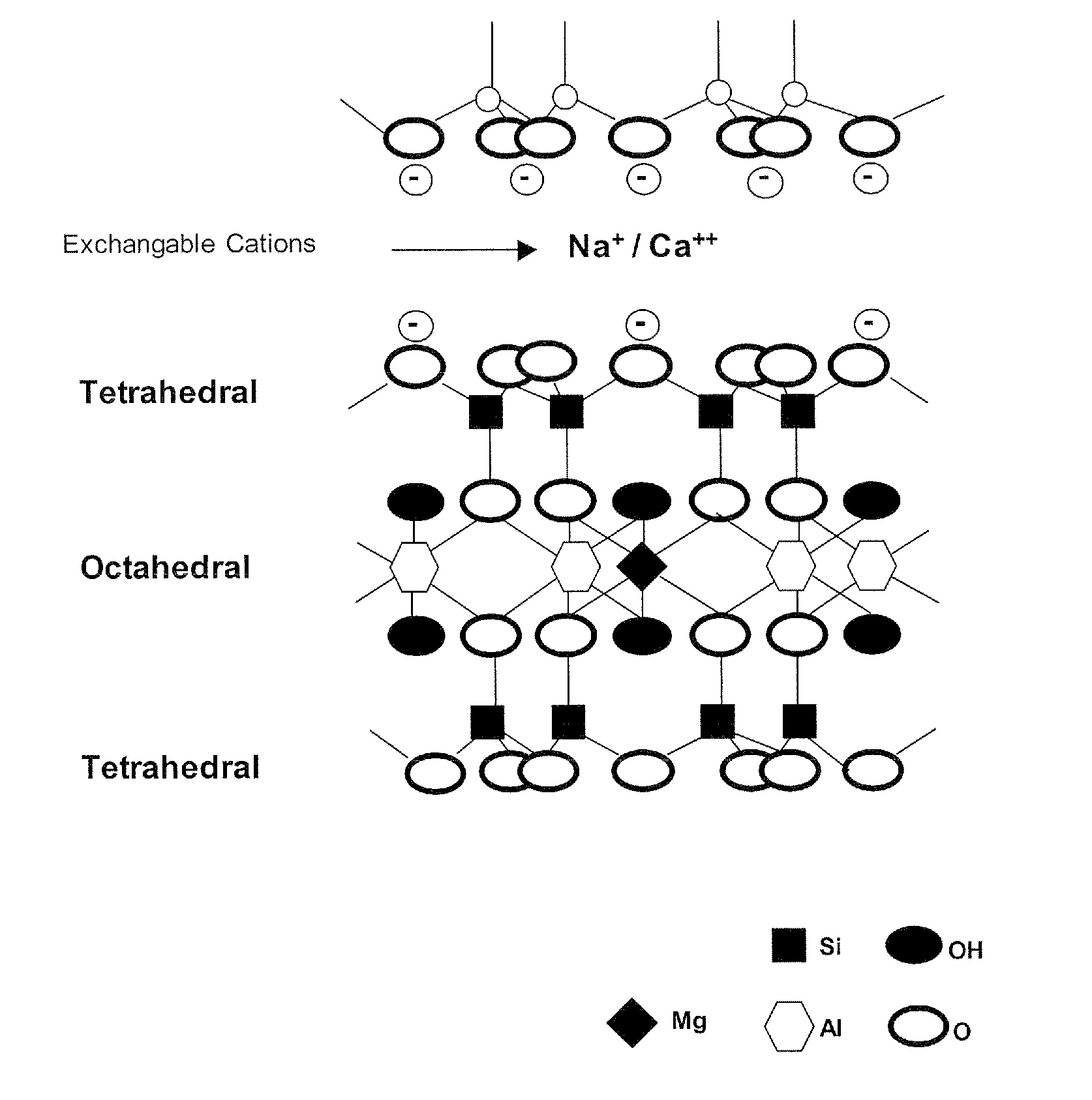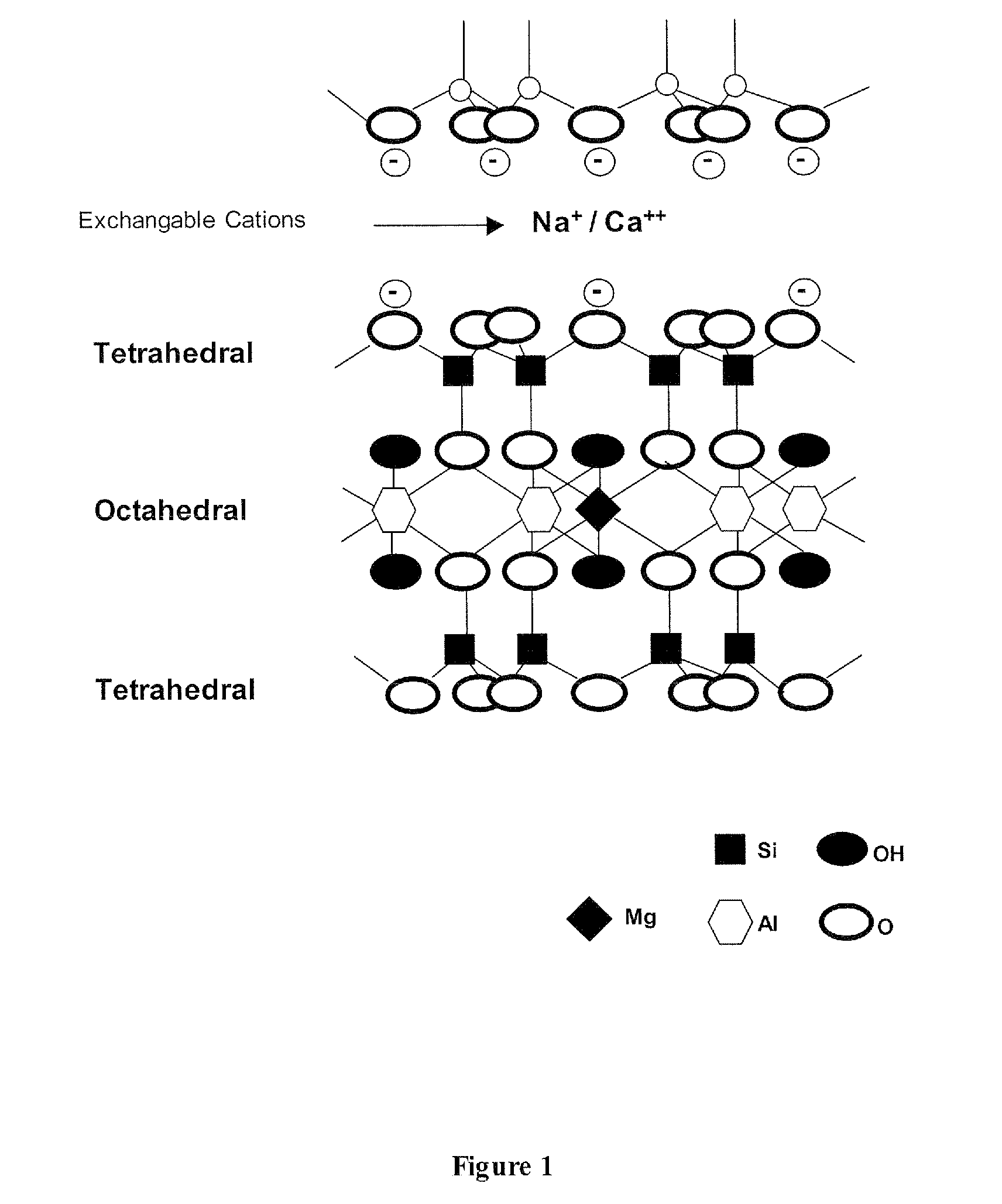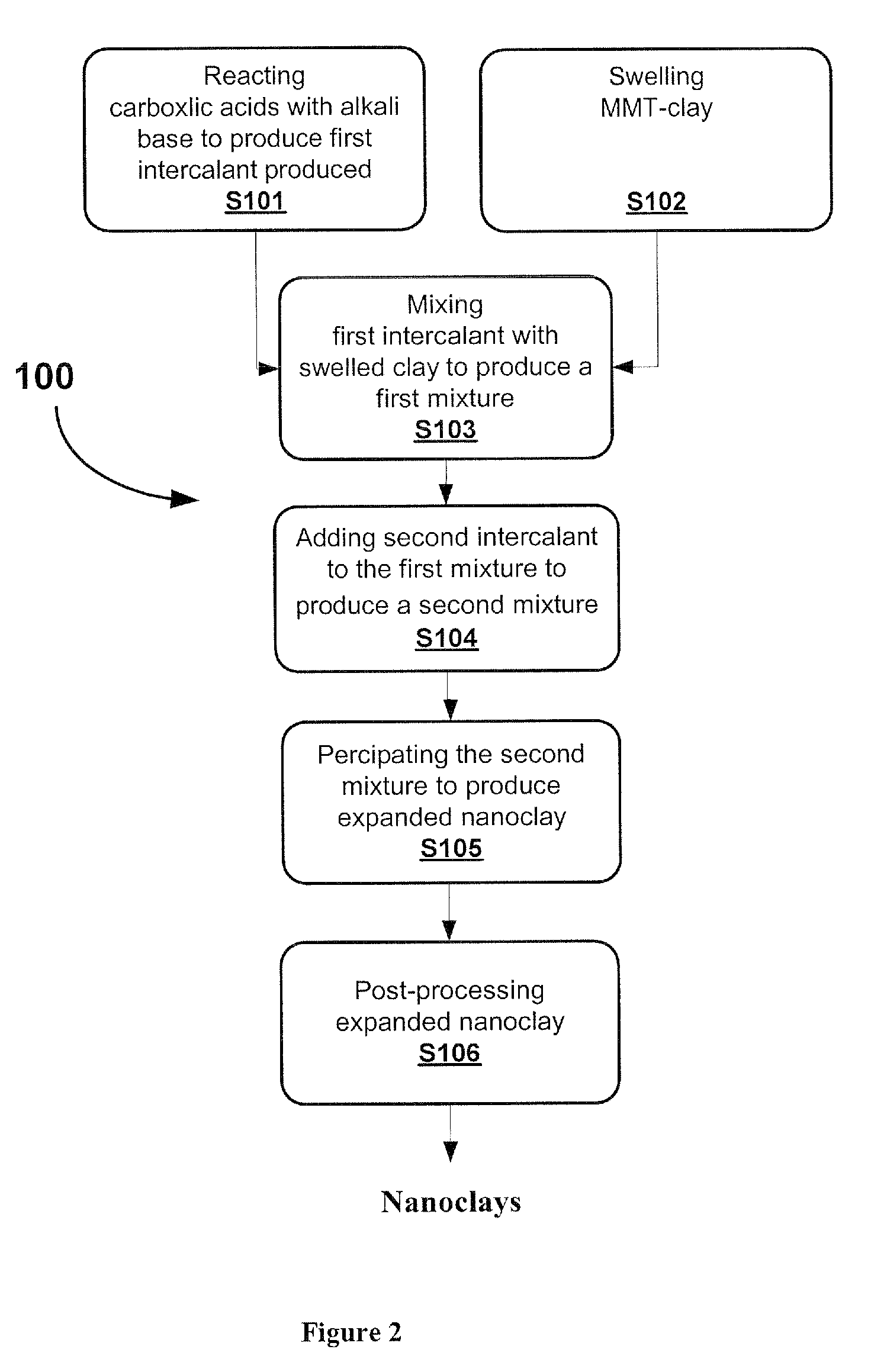Expanded nanoclays and method of producing such expanded nanoclays
- Summary
- Abstract
- Description
- Claims
- Application Information
AI Technical Summary
Benefits of technology
Problems solved by technology
Method used
Image
Examples
example 1
[0051]Fatty acid is mixed with Potassium hydroxide (KOH) in the molar ratio of 1:1. The mixture is heated to temperatures of at least 50° C. to facilitate the formation of fatty acid salt, which is the first intcrcalant to be used for producing nanoclay. Montmorillonite (MMT) is hydrated with water. The series of reactions in this first step is summarized in below:
[0052]
[0053]These salts are mixed with swelled montmorillonite (MMT) at a molar ratio of the salt n:(n+1), wherein n is moles of salt and (n+1) is molar cation exchange capacity (CEC) of the clay. The reaction is held out under 50-80° C. and pH˜1.8-3.4. The reaction is continued for 5 hours to increase the interaction between the organic molecules and layered silicate.
[0054]The microstructure X-ray diffraction characterization is implied to obtain the information about the basal spacing of the nanoclay that is produced by this method. The XRD pattern ol the produced nanoclay after the modification process with an alkali sa...
example 2
[0055]Further modification to increase the basal spacing between tie clay layers obtained in Example 1 is done by using water soluble organic acid. Polyacrylic acid (PAA) is one of the most suitable organic acids for second intercalation reaction, because it is water soluble and it contains polar carboxylic groups. It is added to the solution of carboxylic salt / MMT complex with a weight ratio of MMT to polyacrylic acid, k:(k+1), where k varies from 1 to 7, under pH conditions 1.8-3.4.
[0056]The polyacrylic acid finds enough free space to intercalate into the clay galleries that was previously increased by carboxylic salt intercalant. The acidic media promotes the formation of hydrogen bonds between the silicate layers and water soluble polyacrylic acid. The XRD pattern of polyacrylic acid modified nanoclay is shown in FIG. 7. Further intercalation increases the number of silicate layers with the d-spacing around 40° A and the minor peaks of 3.61° and 5.37° become invisible in the pat...
PUM
| Property | Measurement | Unit |
|---|---|---|
| Temperature | aaaaa | aaaaa |
| Temperature | aaaaa | aaaaa |
| Temperature | aaaaa | aaaaa |
Abstract
Description
Claims
Application Information
 Login to View More
Login to View More - R&D
- Intellectual Property
- Life Sciences
- Materials
- Tech Scout
- Unparalleled Data Quality
- Higher Quality Content
- 60% Fewer Hallucinations
Browse by: Latest US Patents, China's latest patents, Technical Efficacy Thesaurus, Application Domain, Technology Topic, Popular Technical Reports.
© 2025 PatSnap. All rights reserved.Legal|Privacy policy|Modern Slavery Act Transparency Statement|Sitemap|About US| Contact US: help@patsnap.com



